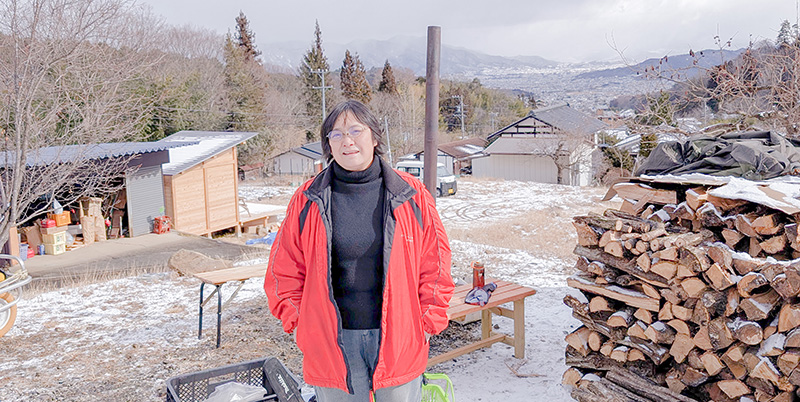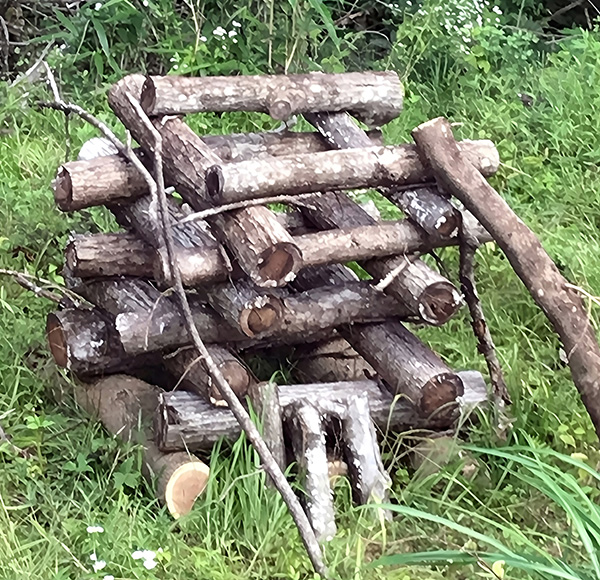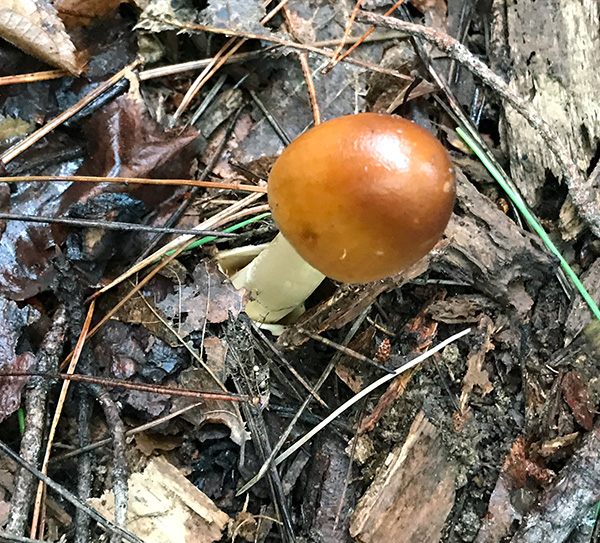Login or Subscribe
You must be logged in to access this content
Subscribe for free access to Japanese Exotic Mushroom Journal and gain insider knowledge on effective cultivation methods for Japanese mushroom species. Elevate your skills with expert tips and innovative technologies to master the art of growing Japanese exotic mushrooms.
◆ Discover exclusive Japanese mushroom cultivation techniques
◆ Learn innovative methods to enhance mushroom quality and yield
◆ Tap into Japan's rich heritage for unique growing insights
◆ Discover exclusive Japanese mushroom cultivation techniques
◆ Learn innovative methods to enhance mushroom quality and yield
◆ Tap into Japan's rich heritage for unique growing insights
Subscribe Now for Free Login
Satoyama Restoration in Nagano Prefecture
Mushrooms as a key component of multi-use forests and mountain-based permaculture.
- Professor Mutsumi Furuta is a Professor at Nagano University, working with the Environment and Tourism Department. Professor Furuta’s research and work revolve around long-term sustainability and promoting the natural beauty and cultural traditions of the Shinshu area (present-day Nagano Prefecture). She is based in Ueda City, about two hours drive from Tokyo, where she was born and where she grew up in the Bessho Onsen area. Today, Professor Furuta works on the historical preservation of the region’s historical sericulture industry, and on preserving traditional technology and culture.A major component of Professor Furuta’s work is promoting local production and consumption as a form of economic stimulus. As part of that, she has focused on satoyama restoration, where both log-cultivated mushrooms and wild mushrooms play key roles. For the past 3 years, Professor Furuta has been working on a satoyama revitalization project in the Bessho Onsen area. As related in the spring issue of 2023, and followed up in the spring issue of 2024, a “satoyama” is a Japanese term for low-lying mountains and foothills near or surrounded by human settlement and actively managed by those human populationsIn the past these satoyama played a critical role in Japanese society, serving as a sort of managed commons (called iriai in Japanese) whose resources enabled the long-term survival of the communities adjacent to them. Satoyama were a form of peasant forest; a natural environment heavily used and molded by human activities, and yet stunningly productive for a wide arrange of other lifeforms. This makes the satoyama concept a very compelling example of productive coexistence in a time when sustainability is a pressing economic concern across the developed world.

- Peasants collected limbs and bamboo for kindling and cooking, coppiced firewood for winter heating, and raked the ground clean collecting “brown manure” to use to fertilize fields (since Japanese peasants, unlike those in Europe, did not raise livestock for meat or milk and had few pack animals). Satoyama even served as sources of springs and streams that provided clean water for agriculture and village life.The result of these interventions was an environment well-suited to the coexistence of many species. Wild mushrooms, especially matsutake, thrived, as did many varieties of wild vegetables harvested in springtime. However, in modern Japan, these rural regions have seen massive depopulation and now have aging populations. Many satoyama now sit long-abandoned, as chemical fertilizers have supplanted compost taken from mountains, and very few Japanese people use wood for heating. Government policy to promote national forestry in the 1950s turned many satoyama into Japanese cedar plantations, only for low prices of imported wood to lead to the hollowing out of that industry and the abandonment of these monoculture forests.Professor Furuta’s research interests pertain to how to use tourism to solve these issues. The concept is elegant and simple. If there are fewer people living in these satoyama areas, and the majority of them are older, then one solution for some regions would be to turn them into zones for outdoors experiences. This kills two birds with one stone, as it draws in people from the cities looking to connect to nature and participate in culturally and historically significant activities that also serve as environmental restoration for places that otherwise lack the labor to fully manage the areas without tourists.Counter to the Western, and especially American, attitude that the less humans are involved with nature the better, in Japan’s geographic and ecological niche this is not always true. Rather, overgrown and unmanaged satoyama are less productive biomes for everything from insects to wildlife such as rabbits and tanuki, and, of course, fungal species. In addition, without coppicing and the periodic thinning of larger, older evergreen trees, these older and less dynamic forests are also less efficient at drawing in carbon from the atmosphere.


- The degradation of these particular buffer landscapes between human habitation and more isolated tracts of nature has become a serious problem, one that counterintuitively leads to greater erosion and more encounters between humans and wild animals such as bears and boars. The solution requires a market; creating more need for firewood, natural mountain composts, domestic lumber, and domestically picked wild vegetables and wild mushrooms.The Shinshu-Ueda Association for the Promotion of Satoyama Culture is a project that Professor Furuta began roughly 3 years ago. The impetus was learning that a broad swath of the low-lying foothills north of historic Bessho Onsen in Ueda City, on the flanks of Mt. Ogami, were set to be cleared and turned into a solar energy farm. While solar energy plays an important role in sustainable energy production, Professor Furuta wanted to preserve this section of mountainous terrain, given that humans have been actively using it for over 1200 years.Together with several other professors and visiting lecturers at Nagano University, Professor Furuta created the formal incorporated association. The group leased the land and got approval from residents and owners, then began the process of reconstructing a traditional satoyama. Professor Furuta’s efforts have created several acres of hillside slopes and terraces where warabi (bracken fern), bamboo shoots, and several other mountain vegetables now sprout in such abundance in spring that group members and nearby residents cannot even eat them all and have to give them away.Other key parts of the project include foraging for wild mushrooms, namely murasaki-shimeji (Clitocybe nuda, commonly known in English as Wood Blewit), and log cultivation of kuritake (Hypholoma lateritium, also known as the cinnamon cap), nameko and, of course, shiitake. The production of mushrooms is only two years old, and as Professor Furuta admitted, she is not a specialist in mycology, and in fact, no one in their group has a background in mycology. As a result, there has been a bit of learning curve and they are still figuring out how to best incorporate mushrooms into their satoyama project.The one unifying tenet of the Satoyama Promotion Association is an interest in traditional Japanese culture paired with sustainability. As such, they have tried log stacking systems traditionally used in the region. The small shed and deck that the association built for woodcraft workshops and projects is also made with the help of traditionally-trained carpenters using classical wood-building techniques that do not use nails.The association has a long-term plan to expand membership and use their small satoyama as a model and testing ground for utilizing these spaces across Japan. The goal is modest: to use their small stretch of land as a classroom to educate other people on the skills and processes that go into maintaining productive woodlands using low-capital, small-scale forestry techniques. The monetization of mountain resources is at the heart of Agro-forestry and tourism as rural development tools. They aim to organize paid wild-vegetable picking tours in spring, wild mushroom tours in fall (Japanese morels also grow in the area), making firewood, and small-scale log cultivation farming, paired with other tourism activities such as miso and soy sauce production, woodcrafts, and hiking, alongside professional training such as chainsaw safety and usage courses that are necessary to provide the skills needed in satoyama maintenance.Bessho Onsen is a quiet and scenic area on the outskirts of Ueda City, not too far from Tokyo. This, along with its longstanding history as a site of pilgrimage to culturally significant Buddhist temple sites and famed hot springs, make it an ideal candidate for this kind of tourism-based mixed usage project. It will make an interesting case study for the use of wild mushrooms and wild vegetables, paired with log cultivation, and whether these can provide meaningful income and development while preserving threatened ecosystems that depend on regular human management in order to continue existing.This idea of permaculture has received growing attention in the United States, Finland, and numerous other countries with mountain and forestry resources that are currently underutilized. Especially as many environmentalists and scientists alike realize that a total lack of human involvement is not always ideal for sustainability and the health of the ecosystem. Fungi play a unique role in permaculture as part of a multi-faceted and seasonally-evolving category of production. This too, especially the production of inoculated logs or specialized spawn for log cultivation of mushrooms in forest environments, is an interesting potential application of the mushroom business with the potential to scale in conjunction to public interest.






 1-2-13 Honmachi, Komoro city, Nagano prefecture, Japan 384-0026
1-2-13 Honmachi, Komoro city, Nagano prefecture, Japan 384-0026